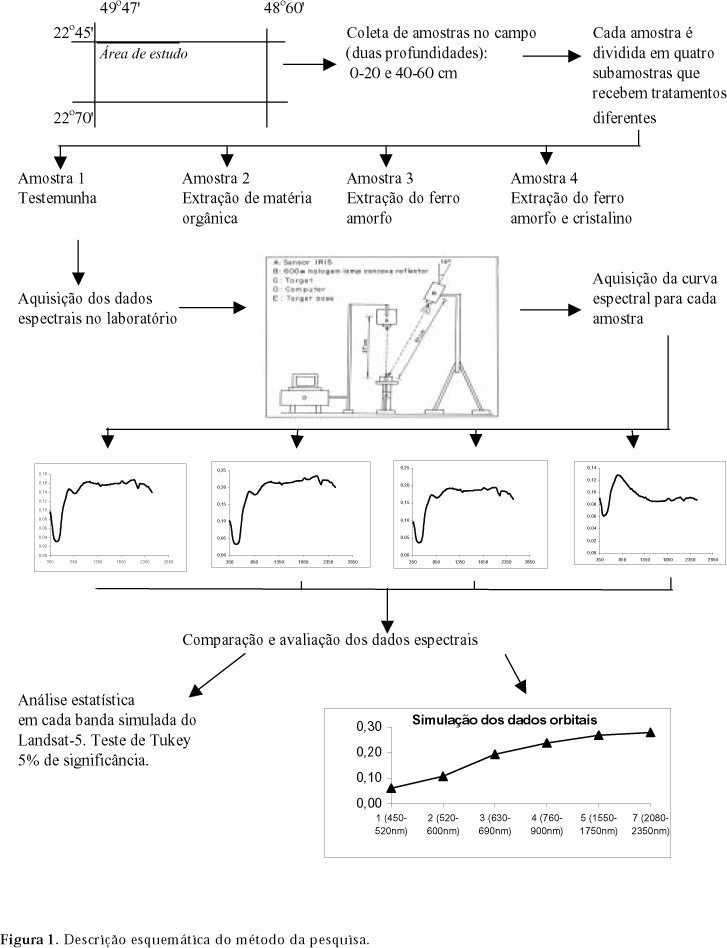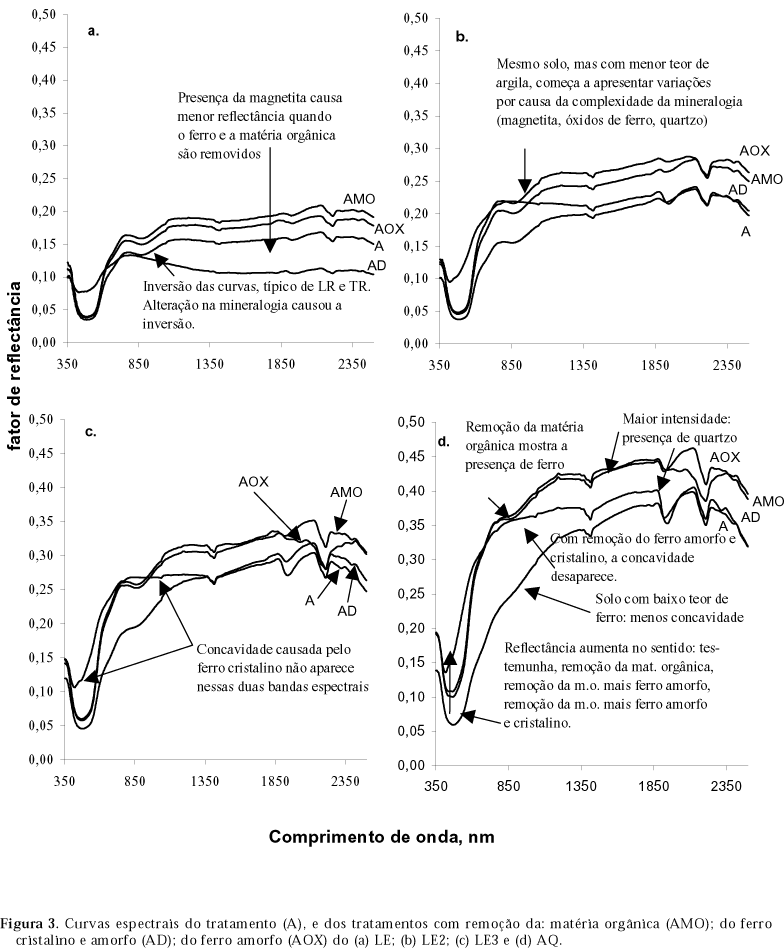The influence of organic matter and amorphous and crystalline iron contents on the reflectance (400 to 2500 nm) of various soils was evaluated. Studied soils were Typic Argiudoll (TR), Typic Eutrorthox (LR), Typic Argiudoll (PE), Typic Haplortox (LE), Typic Quartzipsamment (AQ), and Typic Paleudalf (PV). Surface and subsurface soil samples were used in four conditions: a) as sampled; b) after removal of organic matter; c) after removal of the organic matter and the amorphous iron; and d) after removing organic matter and amorphous iron and crystalline iron. Reflectance factor was acquired from 400 nm to 2.450 nm and TM/Landsat spectral bands were simulated. Removal of organic and amorphous iron caused an overall increase of the reflectance along the spectrum, for all soils. Removal of crystalline iron caused the reflectance to increase in the first portion of the spectrum (400 to 1.000 nm), but not in intermediate (1.000 to 1.900 nm) and final portion of the spectrum (after 1.900 nm). Crystalline iron was responsible for concavities in the spectral region near 400 nm and 850 nm. Use of laboratory spectroradiometry proved to be a fast, non-destructive, and easy-to-prepare technique for analyzing absorption features caused by organic matter and iron forms in soils.
spectroradiometry; remote sensing; soil mineralogy; forms of iron; organic matter








